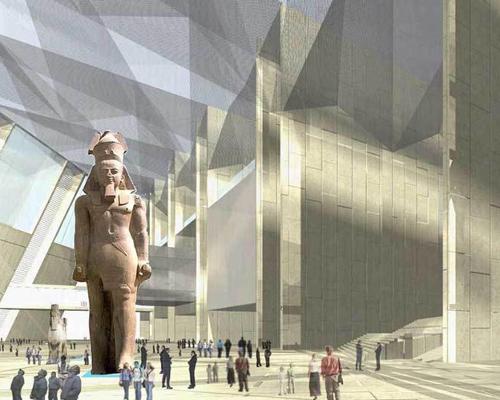11 Aug 2022
The 'world's most anticipated museum' to finally open this year
BY Tom Walker

The Grand Egyptian Museum is set to finally open its doors after a design and construction project which has taken more than 20 years to complete.
Touted as the world's most anticipated museum – thanks to both its unique design and the treasures it will house – the attraction was first announced to the world in 2001.
A design competition in 2002 received more than 1,500 entries, from which Heneghan Peng Architects were selected for the development in 2003.
After a delayed start, ground was finally broken in 2005 and the building of the museum has taken nearly 15 years – with the COVID-19 pandemic adding further disruption to the process.
Opening in November 2022, the Grand Egyptian Museum (GEM) will house, display, and preserve some of the world’s greatest ancient treasures – including King Tut’s entire treasure collection, which will be available to the public for the very first time.
GEM will be the largest archaeological museum complex in the world and is set to host to more than 100,000 artefacts.
As well as King Tut's collection, the numerous galleries will exhibit pre-historic times through Egypt’s many thousands of years of pharaonic civilization through to the ancient Greek and Roman periods of Egyptian history.
The museum has been designed as a cultural complex of activities devoted to Egyptology and will contain 24,000sq m of permanent exhibition space, a children’s museum, conference and education facilities, a large conservation centre and extensive gardens on the 50h site.
Describing the design of the museum, Heneghan Peng Architects said: "The site for the Grand Egyptian Museum is located at the edge of the first desert plateau between the pyramids and Cairo. It is defined by a 50m level difference, created as the Nile carves its way through the desert to the Mediterranean, a geological condition that has shaped Egypt for over 3,000 years.
"The pyramids, funerary monuments, are located in the desert on the plateau 2km from the museum site, while the site for the museum is located both in the valley and on the plateau.
"The design of the museum utilises the level difference to construct a new ‘edge’ to the plateau, a surface defined by a veil of translucent stone that transforms from day to night. The museum exists between the level of the Nile Valley and the plateau, never extending above the plateau.
"A 3-dimensional structure inscribed by a set of visual axes from the site to the three pyramids defines the framework within which the museum emerges, from the overall scale of the site to the smallest of details.
"The approach to the museum is a series of layers, whereby the visitor moves through a monumental forecourt, a shaded entrance area and a grand staircase that ascends to plateau level, the level at which the galleries are located where for the first time the visitor sees the pyramids from within the museum."
Close Window